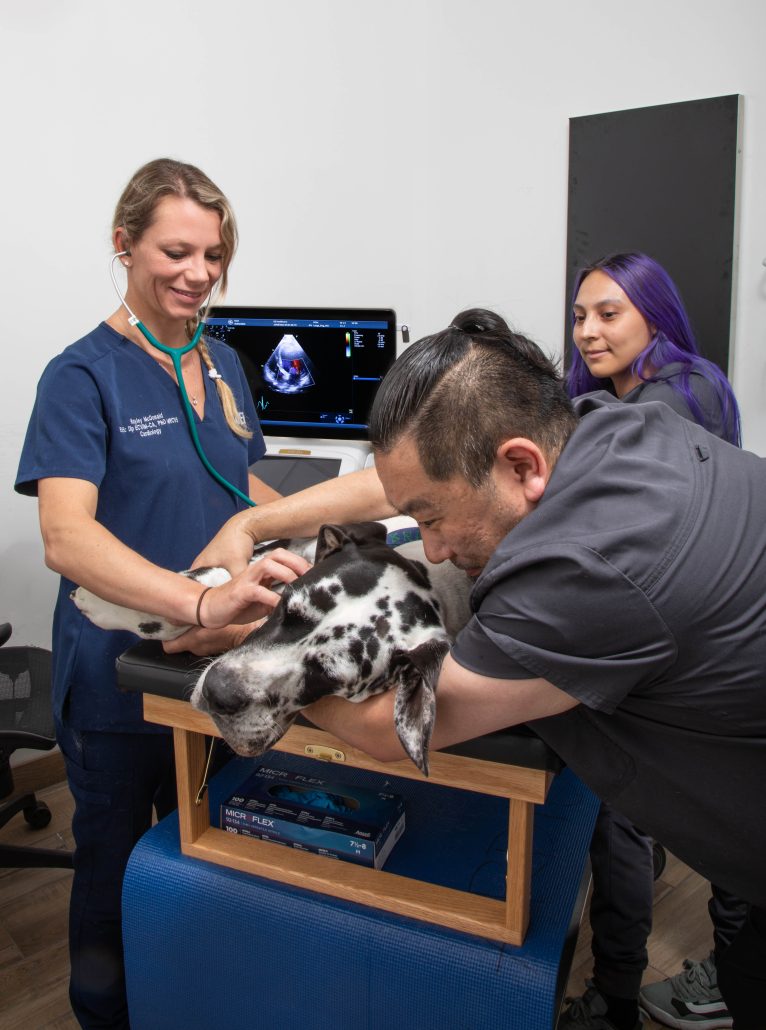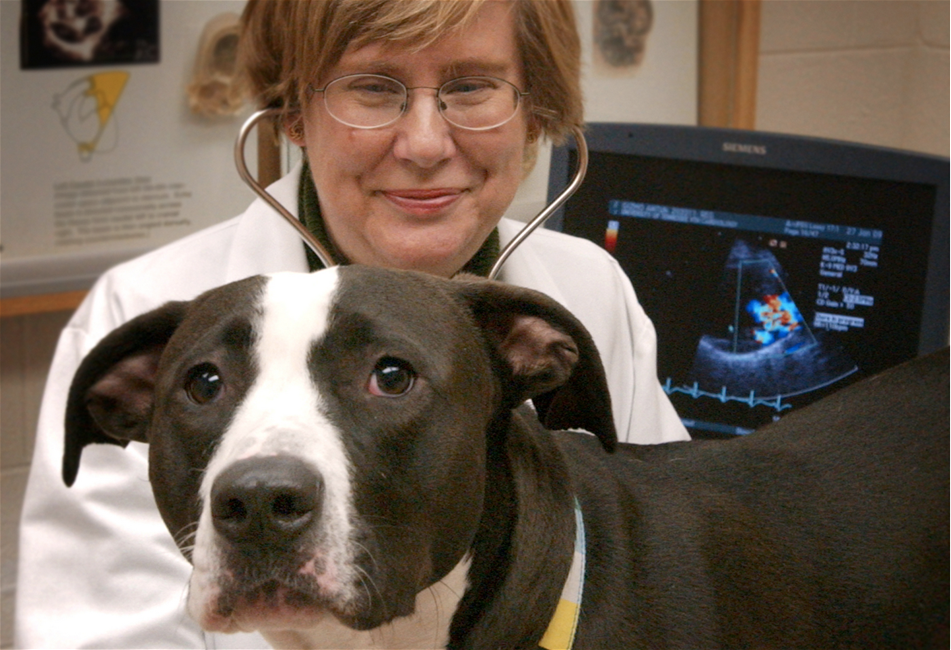What You Need to Know Concerning Veterinary Providers: An Introduction of Diagnostic Equipments and Procedures
Vet solutions play an essential duty in preserving the health of family pets. Routine exams can expose hidden wellness concerns early. Various analysis tools and treatments, such as blood examinations and imaging methods, provide crucial understandings into a pet's health. Recognizing these techniques is key for pet owners. What specific analysis procedures are most commonly utilized, and exactly how can they affect a pet dog's treatment plan?
Value of Regular Vet Exams
While numerous family pet proprietors may take too lightly the importance of normal veterinary check-ups, these consultations are important for keeping an animal's general health. Regular check outs to the veterinarian permit very early discovery of prospective wellness problems before they rise into major troubles. Regular check-ups usually include vaccinations, which are very important for preventing infectious conditions that can significantly affect a family pet's health. In addition, these consultations give a possibility for vets to assess the animal's weight, dental health, and overall condition, making sure that the pet dog is thriving. During these gos to, pet dog owners can likewise obtain important guidance on diet plan, exercise, and preventative care tailored to their specific pet dog's demands.
Typical Analysis Treatments in Veterinary Medicine
In vet medicine, exact medical diagnosis is vital for efficient treatment. Usual analysis treatments include blood testing methods, advanced imaging innovations, and urinalysis, each playing a considerable function in determining health and wellness concerns. Recognizing these methods boosts the ability to offer proper look after pet patients.
Blood Examining Techniques
Blood testing techniques work as essential analysis devices in veterinary medication, allowing veterinarians to evaluate the health of animals accurately. These strategies entail accumulating blood samples to assess different parts, such as white and red blood cells, platelets, and biochemical markers. Common examinations consist of total blood matters (CBC), which examine total health and wellness and identify infections, and biochemical panels, which evaluate organ feature and metabolic condition. Additionally, serological tests can identify specific illness with antibody detection. Blood screening is minimally invasive and gives essential details that aids in detecting problems, keeping an eye on health standing, and examining feedbacks to therapies. On the whole, these strategies play a crucial function in making certain ideal take care of pet dogs and livestock alike.
Imaging Technologies Utilized
Diagnostic imaging technologies are necessary devices in vet medicine, complementing blood screening techniques by providing aesthetic insights into a pet's inner structures. Usual imaging methods consist of X-rays, which are useful for evaluating bone cracks and identifying international objects, and ultrasound, which permits real-time visualization of soft tissues and organs. Magnetic vibration imaging (MRI) offers in-depth photos of intricate physiological locations, especially in neurological assessments. Computed tomography (CT) supplies cross-sectional pictures, boosting diagnostic accuracy for various conditions. Each of these innovations aids veterinarians in diagnosing illnesses, preparing therapies, and monitoring recovery. By incorporating imaging innovations, vet specialists can much better evaluate an animal's health and wellness and make notified decisions regarding their care.
Urinalysis and Diagnostics
Urinalysis functions as a crucial diagnostic device in veterinary medication, giving useful understandings right into a pet's overall health and wellness and helping in the discovery of different conditions. This non-invasive procedure examines urine samples to analyze kidney function, hydration standing, and metabolic conditions. Common components checked out consist of certain gravity, pH levels, glucose, proteins, and the existence of blood or bacteria. Abnormal findings can show problems such as urinary system tract infections, diabetes mellitus, or kidney disease. To improve analysis accuracy, urinalysis is often executed in conjunction with other examinations, such as blood job and imaging research studies. Early discovery through urinalysis can cause prompt interventions, boosting the diagnosis for lots of veterinary individuals. For that reason, it is a vital aspect of thorough veterinary care.
Comprehending Blood Examinations and Lab Analysis
Comprehending blood tests and lab evaluation is crucial in vet medicine as it helps in diagnosing numerous wellness conditions in animals. Different kinds of blood examinations supply essential info about a pet's internal state, while interpreting lab results needs mindful consideration of countless variables. This section will explore the types of blood examinations available and the relevance of their results.
Kinds of Blood Examinations
Blood examinations play a crucial role in veterinary medication, offering vital insights into an animal's health status. Different kinds of blood examinations are utilized, each serving different purposes. Total blood counts (CBC) assess overall health and wellness and identify problems such as anemia or infection. Biochemical profiles examine organ function by determining electrolytes and enzymes, supplying insights right into metabolic wellness. Serological examinations determine details antibodies or virus, helping in the diagnosis of infections or autoimmune diseases. Blood typing warranties secure transfusions, while coagulation examinations evaluate the blood's ability to clot, essential for surgeries. These tests collectively boost medical diagnosis, treatment planning, and surveillance of a pet's health check and wellness, highlighting the importance of thorough laboratory analysis in veterinary care.

Interpreting Laboratory Outcomes
An extensive evaluation of laboratory results is necessary for exact diagnosis and treatment in vet medication. Analyzing lab results requires an understanding of typical referral varieties and the significance of discrepancies. Blood original site tests can expose different wellness indications, such as body organ feature, electrolyte balance, and the presence of infections. Veterinarians need to take into consideration the whole professional image, consisting of the animal's history, health examination searchings for, and any kind of symptoms presented. Variants in outcomes might emerge from factors such as age, breed, and underlying health conditions. As a result, laboratory results ought to not be watched alone but rather as part of an all-encompassing diagnostic technique. Exact interpretation enables tailored therapy strategies and much better outcomes for veterinary people.
Imaging Techniques: X-rays, Ultrasounds, and Beyond
Imaging strategies are crucial devices in vet medicine, providing critical understandings right into the health and wellness and well-being of pets. Amongst one of the most generally utilized techniques are Ultrasounds and x-rays. X-rays are very useful for envisioning bone frameworks, assisting veterinarians identify fractures, tumors, or foreign objects. This method is quick and non-invasive, making it excellent for immediate situations.Ultrasounds, on the other hand, use acoustic waves to produce photos of soft tissues and organs. This strategy is particularly valuable for taking a look at the heart, abdominal area, and reproductive organs, enabling vets to assess problems like liquid buildup or organ abnormalities.Beyond X-rays and ultrasounds, progressed imaging techniques such as computed tomography (CT) and magnetic vibration imaging (MRI) are increasingly made use of in veterinary method. These approaches offer thorough cross-sectional images, improving the precision of diagnoses and therapy strategies. CT Scans For Animals. In general, imaging strategies play an important function in making certain effective vet treatment
The Duty of Biopsies in Diagnosing Animal Health And Wellness Issues
Accuracy in diagnosing health and wellness concerns in pets commonly pivots on using biopsies, which offer conclusive details concerning cells abnormalities. A biopsy includes the removal of a tiny example of cells for evaluation under a microscope, enabling vets to identify various conditions, consisting of infections, lumps, and inflammatory diseases. This diagnostic tool is necessary for distinguishing between malignant and benign growths, directing treatment decisions, and examining the intensity of a condition.Biopsies can be done making use of numerous strategies, such as needle desire, incisional biopsies, or excisional biopsies, depending on the location and kind of tissue included. The selection of approach might influence recovery time and the quantity of cells accumulated. Inevitably, the info obtained from a biopsy can cause targeted therapies, enhancing outcomes for pets facing serious wellness obstacles. Vets highlight the relevance of this treatment in attaining precise diagnoses and effective therapy strategies.
Advanced Diagnostic Tools: Endoscopy and CT Scans

Advanced diagnostic devices, such as official website endoscopy and CT scans, play a necessary role in modern-day veterinary medicine, offering non-invasive methods to imagine internal frameworks and identify numerous conditions in pets. Endoscopy includes using a versatile tube equipped with a cam, allowing veterinarians to check out the gastrointestinal system and breathing system directly. This method can disclose irregularities such as lumps, foreign bodies, or inflammation, making it possible for targeted treatment plans.CT scans, on the various other hand, utilize sophisticated imaging modern technology to create in-depth cross-sectional photos of the body (Board Certified Veterinary Cardiologist). This approach is particularly beneficial for evaluating complicated frameworks like the mind, spinal column, and joints. By giving high-resolution pictures, CT scans assist veterinarians in recognizing concerns that may not appear with typical radiography. With each other, these advanced tools improve diagnostic accuracy, improve treatment results, and eventually add to far better total pet dog wellness monitoring

Translating Test Outcomes: What Animal Owners Need To Know
Recognizing examination results can be a tough task for pet dog owners, specifically after advanced treatments like endoscopy and CT scans have actually been done. Analyzing these outcomes requires an understanding of medical terms and a clear understanding of what the searchings for suggest concerning the animal's wellness. Veterinarians often supply descriptions, but the intricacy of the outcomes can still lead to confusion.Pet proprietors need to actively involve in conversations with their veterinarians, asking concerns to make clear any unpredictabilities. It is necessary to comprehend unusual versus regular outcomes and the implications for the animal's therapy strategy. Additionally, acknowledging that some outcomes might call for further screening or surveillance can help owners stay notified concerning their pet's health and wellness trip. Ultimately, a collective approach between pet proprietors and vet professionals fosters better health results and improves the general treatment experience for pet dogs.
Regularly Asked Inquiries
How Do I Choose the Right Veterinary Center for My Animal?
Selecting the ideal veterinary center includes investigating regional choices, examining certifications, checking out centers, and assessing team interactions (CT Scans For Dogs). Focusing on referrals from relied on resources can assist guarantee the best care and environment for a pet dog's wellness requirements
What Should I Do if My Family Pet Declines to Go to the Veterinarian?
When a pet dog declines to visit the vet, it's advisable to continue to be tranquil, use treats or playthings to tempt them, and think about scheduling a home check out if anxiety persists. Perseverance and positive reinforcement are key.
Exist Telehealth Options for Veterinary Services?
Telehealth options for veterinary services are progressively offered, permitting pet dog proprietors to speak with veterinarians remotely. These services enable discussions regarding wellness concerns, advice on minor ailments, and follow-ups without requiring to see a facility.
Just how Usually Should My Pet Dog Have Oral Exams?
The regularity of dental examinations for animals generally depends on their age and breed. Usually, vets suggest annual dental evaluations, although some pet dogs might call for more frequent visits to keep suitable dental wellness.

What Are the Costs Connected With Vet Diagnostics?
The prices connected with veterinary diagnostics can differ extensively, generally varying from standard examinations like blood work to advanced imaging methods. Variables affecting expenses include the clinic's place, devices used, and certain examinations needed for each and every pet. Veterinary services play an essential function in preserving the wellness of pet dogs. While many pet owners may ignore the relevance of normal vet exams, these consultations are essential for maintaining an animal's general health and wellness. Additionally, these appointments provide an opportunity for veterinarians to evaluate the animal's weight, dental health, and overall condition, making sure that the pet dog is prospering. Accuracy in identifying health and wellness problems in family pets commonly pivots on the use of biopsies, which offer definitive information concerning cells irregularities. Furthermore, recognizing that some results might need additional testing or monitoring can aid proprietors stay informed concerning their family pet's wellness journey.